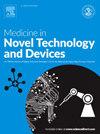A Comprehensive Review of Deep Learning in OCT Image Segmentation and Classification
Q3 Medicine
引用次数: 0
Abstract
Optical Coherence Tomography (OCT) has transformed ophthalmology by enabling high-resolution imaging essential for diagnosing a wide range of ocular diseases. In recent years, Deep Learning (DL) techniques have really integrated well with OCT, bringing a significant boost in the accuracy and efficiency of automatic disease detection. This review is meant as a thorough and full-scale exploration of DL-based OCT segmentation and classification. It discusses the progress and points out key issues which need to be addressed in future research. The paper first looks at OCT datasets, their diversity, representational diseases and capacity to form reliable training sets for DL models. Then it delves into analysis with segmentation methods, compares their performance and identifies problems with existing approaches. The review surveys current classification techniques, contrasting deep learning models of various architectures which are capable of recognizing and distinguishing retinal diseases. It also focuses on the clinical significance of these models–details precisely what ocular conditions they analyze, and how well they can diagnose disease. In addition to synthesizing existing achievements, the review makes clear the major highpoints of current research as well as future directions. It identifies problems such as inadequate dataset diversity, model generality irregulatity, interpretability and computation efficiency. It makes concrete proposals for improvement, including real-world image collection and algorithm optimizations to fill in gaps in databases or increase model episode performance remarkably. This kind-of study should eventually help to provide a clear view of the present state as well as future prospects for deep learning in ophthalmic diagnosis by OCT.
深度学习在OCT图像分割与分类中的应用综述
光学相干断层扫描(OCT)通过实现诊断多种眼部疾病所必需的高分辨率成像,改变了眼科。近年来,深度学习(Deep Learning, DL)技术与OCT技术实现了很好的融合,极大地提高了疾病自动检测的准确性和效率。本文旨在对基于dl的OCT分割和分类进行全面深入的探索。讨论了研究进展,指出了今后研究中需要解决的关键问题。本文首先研究了OCT数据集、它们的多样性、代表性疾病和为DL模型形成可靠训练集的能力。然后深入分析与分割方法,比较其性能,并找出现有方法存在的问题。本文综述了当前的分类技术,对比了能够识别和区分视网膜疾病的各种架构的深度学习模型。它还关注这些模型的临床意义——详细说明它们分析的眼部状况,以及它们诊断疾病的能力。本文在综合现有研究成果的基础上,明确了当前研究的主要亮点和未来研究方向。它识别了数据集多样性不足、模型通用性不规范、可解释性和计算效率等问题。它提出了具体的改进建议,包括真实世界的图像收集和算法优化,以填补数据库中的空白或显着提高模型集的性能。这种研究最终将有助于为眼科OCT诊断中深度学习的现状和未来前景提供一个清晰的认识。
本文章由计算机程序翻译,如有差异,请以英文原文为准。
求助全文
约1分钟内获得全文
求助全文
来源期刊

Medicine in Novel Technology and Devices
Medicine-Medicine (miscellaneous)
CiteScore
3.00
自引率
0.00%
发文量
74
审稿时长
64 days
 求助内容:
求助内容: 应助结果提醒方式:
应助结果提醒方式:


